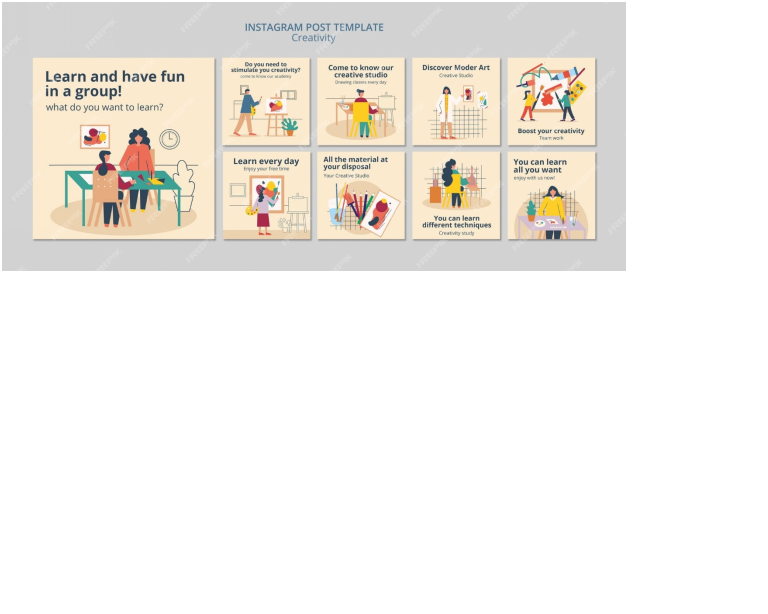Introduction to Marketing Material
Marketing material is crucial in promoting businesses and reaching out to potential customers. But what exactly is marketing material? Simply, it refers to any tangible or digital content used to convey information about a product or service to an audience. It can include brochures, flyers, business cards, websites, social media posts, and more.
Marketing material bridges businesses and their target market, enabling them to communicate their offerings effectively. Let’s explore, what is marketing material.
Importance of Marketing Material

Marketing material holds immense importance in the world of business for several reasons.
Firstly, it helps companies to establish their brand identity and create a lasting impression on their audience. When designed and executed effectively, marketing material can evoke emotions, build trust, and differentiate one business from its competitors.
Additionally, marketing material serves as a tool to educate potential customers about the benefits and features of a product or service. By presenting information in an engaging and visually appealing manner, businesses can capture the attention of their target market and compel them to take action.
Furthermore, marketing material is vital in driving sales and generating revenue. A well-designed brochure or website can act as a salesperson, showcasing the unique selling points of a product or service and convincing customers to make a purchase.
It also serves as a constant reminder of a business’s offerings, keeping them at the forefront of customers’ minds. With effective marketing material, companies can attract new customers and retain existing ones, hindering their growth and success.
Types of Marketing Material
When it comes to marketing material, the possibilities are endless. There are various types of marketing material that businesses can utilize depending on their goals and target audience.
Some common examples include:
- Brochures: Brochures are informative and visually appealing documents that overview a business’s offerings. They can be distributed at events, handed out to potential customers, or displayed at physical locations.
- Flyers are single-page advertisements often used to promote events, sales, or special offers. They can be distributed in public spaces or inserted into newspapers and magazines.
- Business Cards: Business cards are essential for networking and making a memorable impression. They typically include a person’s contact information, logo, and a brief description of their business.
- Websites: In today’s digital age, having a well-designed website is crucial. It serves as a virtual storefront and provides customers with information about a business’s products, services, and contact details.
- Social Media Posts: Social media platforms such as Facebook, Instagram, and Twitter offer a powerful way to reach a broad audience. Businesses can create engaging posts to promote their offerings and interact with customers.
These are just a few examples of the many types of marketing material available. The key is to choose the ones that align with your business’s goals and target audience.
Creating Effective Marketing Material

Creating effective marketing material requires careful planning and consideration. It’s not just about slapping together some text and images; it’s about crafting a message that resonates with your target market and compels them to take action.
Here are a few tips to create marketing material that stands out:
- Know Your Target Audience: Before creating any marketing material, it’s crucial to understand your target audience. What are their needs, desires, and pain points? Knowing your audience can tailor your message and design to appeal to them specifically.
- Clear and Concise Messaging: Keep your messaging concise and easy to understand. Avoid using jargon or complex language that might confuse your audience. Use bullet points, headings, and subheadings to break up the text and make it more digestible.
- Compelling Design: Visual appeal is essential when it comes to marketing material. Use high-quality images, choose fonts and colors that align with your brand, and ensure the layout is clean and organized. A cluttered design can be overwhelming and deter potential customers.
- Call to Action: Every marketing material should include a clear call to action (CTA). Whether it’s “Visit our website,” “Call us for a free consultation,” or “Sign up for our newsletter,” the CTA should guide your audience toward the next step.
Remember, effective marketing material should capture attention and leave a lasting impression on your audience. Take the time to plan, design, and execute your marketing material to ensure that it aligns with your business goals and resonates with your target audience.
Incorporating Branding into Marketing Material
Branding is vital in marketing material as it helps businesses establish their identity and differentiate themselves from competitors. Your branding should be consistent across all marketing material to create a cohesive and memorable experience for your audience.
Here are some key elements to consider when incorporating branding into your marketing material:
- Logo: Your logo is the visual representation of your business and should be prominently displayed on all marketing material. Ensure it is clear, legible, and reflects your brand’s personality.
- Colors and Fonts: Consistency in colors and fonts is essential for brand recognition. Please choose a color palette and font style that aligns with your brand’s values and use them consistently across all marketing material.
- The tone of Voice: The tone of voice used in your marketing material should reflect your brand’s personality. Are you playful and witty or professional and formal? Use language that resonates with your target audience and reinforces your brand’s image.
- Visual Elements: Consider incorporating visual elements that are unique to your brand. It could be a specific pattern, illustration style, or photography approach. These visual cues can help your audience instantly recognize your brand.
Remember, branding is not just about colors and logos; it’s about the emotions and associations that your audience attaches to your brand. By incorporating consistent branding into your marketing material, you can build brand recognition, trust, and loyalty among your target audience.
Using Marketing Material to Target Specific Audiences

One of the strengths of marketing material is its ability to target specific audiences. Unlike mass media advertising, marketing material can be tailored to address different customer segments’ unique needs and interests.
Here are a few strategies to effectively use marketing material to target specific audiences:
- Research and Segmentation: Conduct thorough market research to understand the different segments within your target audience. Identify their demographics, preferences, and pain points. It will help you create marketing material that speaks directly to their needs.
- Personalization: Use personalization techniques to make your marketing material more relevant to your audience. It could include addressing them by name in emails or tailoring the content to their specific interests or location.
- Segment-Specific Offers: Create offers or promotions specifically designed for each customer segment. Highlight how your product or service can address their unique challenges or provide solutions that are tailored to their needs.
- Testimonials and Case Studies: Include testimonials and case studies in your marketing material that resonate with each customer segment. This social proof can help build trust and demonstrate how your offerings have benefited others like them.
By using marketing material to target specific audiences, you can increase the effectiveness of your campaigns and achieve higher conversion rates. Tailoring your message and design to resonate with each segment shows that you understand their needs and are providing them with a tailored solution.
Distributing and Promoting Marketing Material
Creating effective marketing material is only half the battle; you must ensure it reaches your target audience.
Here are some distribution and promotion strategies to get your marketing material in front of the right people:
- Direct Mail: Sending marketing material directly to your target audience’s mailbox can be an effective way to grab their attention. Use eye-catching envelopes or postcards to pique their curiosity and entice them to open and read your material.
- In-Person Distribution: Consider distributing your marketing material in person if your target audience frequents specific physical locations, such as trade shows or local events. It allows for direct interaction and provides an opportunity to answer any questions your audience may have.
- Digital Channels: Leverage digital channels to distribute and promote your marketing material. It could include sharing it on social media platforms, sending it via email marketing campaigns, or downloading it on your website.
- Partnerships and Collaborations: Consider partnering with complementary businesses or influencers with access to your target audience. They can help distribute your marketing material to their followers or customers, increasing its reach and credibility.
Remember, the distribution and promotion of your marketing material should align with your target audience’s preferences and behaviors. By choosing the proper channels and strategies, you can maximize the visibility and impact of your marketing campaigns.
Measuring the Success of Marketing Material
To harness the full power of marketing material, measuring its success and making data-driven decisions is essential.
Here are some key metrics to consider when evaluating the effectiveness of your marketing material:
- Conversion Rate: Measure the percentage of recipients who take the desired action after interacting with your marketing material. This could be purchasing, signing up for a newsletter, or filling out a contact form.
- Engagement: Analyze the level of engagement your marketing material receives. This could include the number of clicks, likes, shares, or comments it generates. High concentration indicates that your material is resonating with your audience.
- Return on Investment (ROI): Calculate the ROI of your marketing material by comparing the costs associated with its creation and distribution to the revenue generated as a result. This helps determine the cost-effectiveness of your campaigns.
- Customer Feedback: Gather feedback from your customers to understand their perception of your marketing material. Conduct surveys or interviews to gather insights and identify areas for improvement.
By regularly measuring the success of your marketing material, you can identify what is working and what needs adjustment. This allows you to optimize your campaigns, allocate resources effectively, and ensure that your marketing efforts generate the desired results.
Conclusion: What is Marketing Material
In conclusion, marketing material is a powerful tool business can utilize to communicate their offerings, establish their brand identity, and drive sales. Companies can unlock their full potential by understanding the importance of marketing material and how it can be effectively created, branded, targeted, and distributed. Craft clear and compelling messaging, incorporate consistent branding, and tailor your marketing material to specific audiences.
And remember to measure the success of your campaigns to make data-driven decisions and continuously improve. So, whether you are a sole proprietor, small business, or medium-sized enterprise, harness the power of marketing material to take your business to new heights.
Need Marketing Material Services whether you are a sole proprietor, small business, or medium size, dynamarkprinting will design and print marketing material. CONTACT NOW



